Paul Robeson
THE LIBRARY OF AFRICAN AMERICAN BIOGRAPHY
John David Smith, editor
Paul Robeson: A Life of Activism and Art , Lindsey R. Swindall (2013)
Paul Robeson
A Life of Activism and Art
Lindsey R. Swindall
Rowman & Littlefield Publishers, Inc.
Lanham Boulder New York Toronto Plymouth, UK
Published by Rowman & Littlefield Publishers, Inc.
A wholly owned subsidiary of The Rowman & Littlefield Publishing Group, Inc.
4501 Forbes Boulevard, Suite 200, Lanham, Maryland 20706
www.rowman.com
10 Thornbury Road, Plymouth PL6 7PP, United Kingdom
Copyright 2013 by Rowman & Littlefield Publishers, Inc.
All rights reserved. No part of this book may be reproduced in any form or by any electronic or mechanical means, including information storage and retrieval systems, without written permission from the publisher, except by a reviewer who may quote passages in a review.
British Library Cataloguing in Publication Information Available
Library of Congress Cataloging-in-Publication Data
Swindall, Lindsey R., 1977
Paul Robeson : a life of activism and art / Lindsey R. Swindall.
pages cm. (The library of African American biography)
Includes bibliographical references and index.
ISBN 978-1-4422-0793-6 (cloth : alkaline paper) ISBN 978-1-4422-0795-0 (ebook) 1. Robeson, Paul, 1898-1976. 2. Robeson, Paul, 1898-1976Political and social views. 3. African AmericansBiography. 4. African American political activistsBiography. 5. African American singersBiography. 6. African American athletesBiography. 7. African American authorsBiography. 8. Harlem Renaissance. I. Title.
E185.97.R63S948 2013
782.0092dc23
[B]
2012046652
 The paper used in this publication meets the minimum requirements of American National Standard for Information SciencesPermanence of Paper for Printed Library Materials, ANSI/NISO Z39.48-1992.
The paper used in this publication meets the minimum requirements of American National Standard for Information SciencesPermanence of Paper for Printed Library Materials, ANSI/NISO Z39.48-1992.
Printed in the United States of America
For B
Contents
Acknowledgments
First, many deeply felt thanks go to John David Smith, because without his guidance and perseverance this project would not have been realized. Thanks also to the editors at Rowman & Littlefield who fostered this manuscript through the process of publication. Special thanks to Jennifer Jensen Wallach, whose biography of Richard Wright got me interested in writing for this important series. I am very appreciative to the archivists who assisted me in securing photo permissions, especially the helpful staff at the Tamiment Library and Robert F. Wagner Labor Archives at New York University. Thanks to my colleagues in the history department at Sam Houston State University who were supportive as I refined this manuscript in Texas especially William K. Ferguson III. I am grateful to those mentors, students, former colleagues, and fellow Robeson acolytes who have been interested champions of my work.
As always, I am thankful to have a tribe of friends and family who are consistently encouraging: Marshall and Lisa Swindall, Lizabeth Foster, Edward Foster, Seth Foster, and Charles Bittner. A special note of thanks also to the northern Foster clan, because without their constant hospitality I would not be able to undertake my research in New York. I hope that Jayden Foster will one day read this book and that it might introduce him, and perhaps some of his generation, to the significant life and work of Paul Robeson. I would like to express sincere appreciation to my partner for his kind attentiveness and undertaking of tasks large and small that helped this manuscript to get written. He has enabled me to truly understand the meaning of a partnership. Finally, it is my greatest hope that Paul Robesons voice comes through in this narrative and that readers not previously acquainted with him will be touched by his story.
Huntsville, Texas
July 2012
Introduction
For two days before his funeral, a continuous line of mourners filed past Paul Robesons open casket in a Harlem funeral home. It was, to the casual observer, a notably diverse gathering. A retired child-care provider in her seventies clutched a program from a production of Othello . This dignified lady remembered singing in a choir that accompanied Robesons interpretation of the Depression-era anthem Ballad for Americans. A man in his thirties recalled humming along to Robesons records when he was a child. A middle-aged transit worker shared how he had learned about the great artist in a segregated school in South Carolina. Writer John O. Killens reflected that it was Robeson who taught him about Pan-Africanism. He recollected first meeting Robeson when he was helping a group of cafeteria workers form a union. The lunch ladies had been overwhelmed when the famous baritone agreed to sing for a benefit concert for them. The day of Robesons funeral in January 1976 was damp and cold. Still, hundreds lined the sidewalks to offer their farewells. They included an African American woman who had saved an autographed Robeson concert program for three decades. A Jewish lady spoke of admiring his integrity and courage. A labor organizer reminisced about providing security for Robeson in Peekskill, New York, in 1949. A writer for Ebony magazine observed that although Robeson was a film star and a famous concert vocalist, this was no celebrity funeral. The event, like the man, defied facile characterization, the reporter concluded. These mourners, who were writers, activists, laborers, music fans, and theater lovers of varied ages and ethnicities, felt connected to Robeson. They venerated him in a unique and heartfelt manner.
In a similar way, exceptionally diverse audiences jammed into venues when he was at the height of his fame in the 1940s. The image on the next page from Rockland Palace revealed working people who probably lived in Harlem, men in suits from downtown, women bearing toothy grins, and students from the nearby universities. They were dark skinned, light skinned, and ranged from young to middle aged. What did they have in common? They adored the tall, handsome performer who stood before them. He returned their smiles with warmth and generosity. The admiration glimmering in the eyes of his listeners was something close to awe. It reflected an association that was much deeper than musical talent, although his singing was beloved, and more profound than film or theater glory, although he was a prominent actor. Some called it magnetism, charisma, or a powerful human vibration. He could walk into Madison Square Garden and a thousand faces would turn his way. His deep voice spoke, and it touched people. His presence moved them, and his intellect challenged them. His body possessed the strength and litheness of an athlete, but he exerted impressive control. Scholar C. L. R. James once reflected that to have been in Robesons company was something that one remembered for days. The perceptive James suggested that Robesons outstanding qualities were his immense power that was tempered by great gentleness. Robeson was a man who was not only blessed with magnificent talent but also was one who, in Jamess words, gave up everything and committed himself to what he believed was the only way for the salvation of mankind. This observation elicits several questions: What issues and events helped shape his career? To what ideas was Robeson so dedicated? Upon what principles did he take his stand?
Certainly, Paul Robeson was a complex and fascinating public figure whose life illustrated and was influenced by several of the most significant historical movements of the first half of the twentieth century. Acting might have been one of his professional crafts, but he was also an actor on the global stage in the public discourse. His own life had perhaps more dramatic importance than any of the fictional roles he interpreted from scripts. Because he was born near the close of the nineteenth century, Robeson came of age during the era when racial segregation in the United States was sanctioned by the highest court in the land. Booker T. Washingtons philosophy of thrift, hard work, and accommodation had been embraced for a generation. The black church offered sanctuary and uplifted the community in which young Paul was reared. When he came of age in the 1910s, the National Association for the Advancement of Colored People (NAACP) offered a challenge to Washingtons leadership. A younger generation was now opting to protest directly against racial injustice. This was a message that Robeson fully embraced. As a young scholar-athlete, he embodied W. E. B. Du Boiss conception of the talented tenth. This group represented the elite of the African American population who would form an educated, professional class that would guide the community forward.

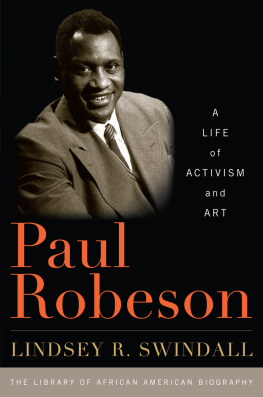
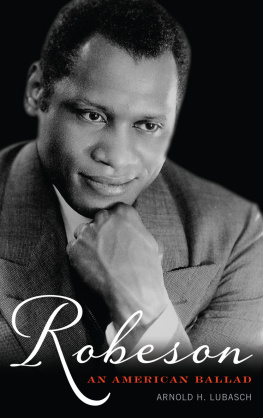
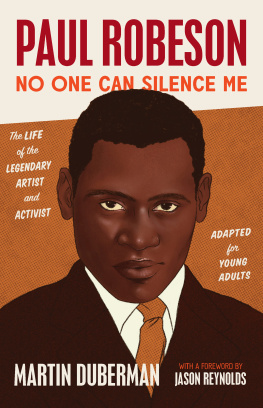
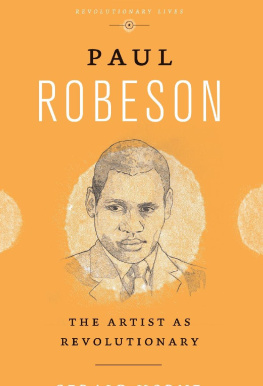



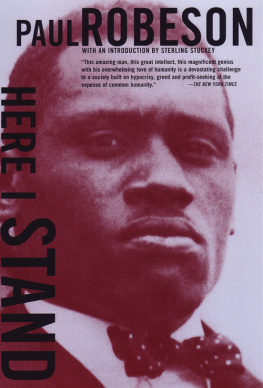

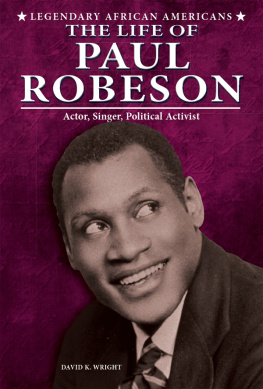
 The paper used in this publication meets the minimum requirements of American National Standard for Information SciencesPermanence of Paper for Printed Library Materials, ANSI/NISO Z39.48-1992.
The paper used in this publication meets the minimum requirements of American National Standard for Information SciencesPermanence of Paper for Printed Library Materials, ANSI/NISO Z39.48-1992.